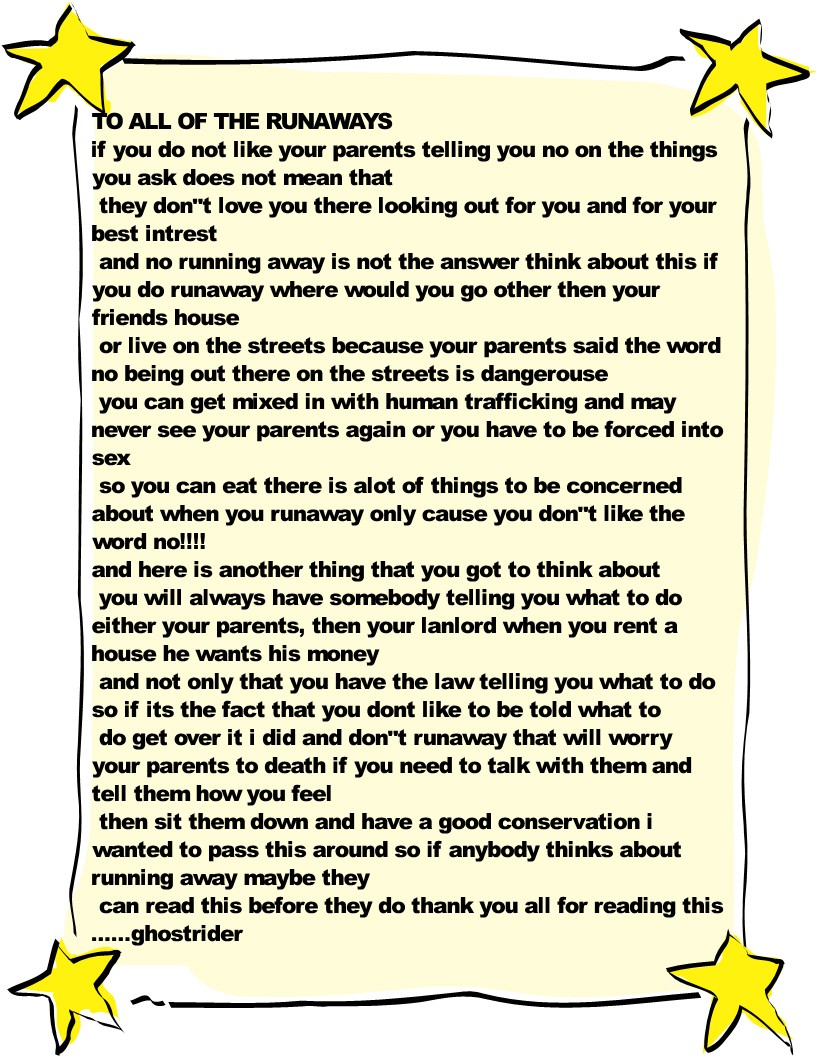WARNING - NEW HUMAN TRAFFICKING ONLINE PREDATOR SCAM TARGETING 12 TO 18 YEAR OLD GIRLS
It has been brought to our attention that there is a new way of human trafficking trick/scam and the bait is telling the girls that they can pose for photo shoots to become models so they can make lots of money. The target ages are from 12 to 18 to make them think that there good about themselves and tell them they can make a hobby out of it and makes a lot of money. The girls are befriended by online human trafficking sexual predators posing as legitimate representatives of various model agencies all to lure the girls to go to a modeling photo shoot appointment. The girls are told not to tell anyone about the appointment. They are then given a location to go to for the photo shoot appointment and the teen is excited about being chosen to become a model and the photo shoot. Instead, the girls are snatched up for human sex trafficking. If you read this please pass it along to your friends, relatives, anybody, mainly parents. This is a heads up!!!!!!!!!! Some of these girls unfortunately end up murdered too. ~ Thank you, your Amber Alert 2010 Team
KEEPING YOUR CHILDREN SAFE ONLINE - PRESENTED TO YOU BY AMBER ALERT 2010 - "A VOICE FOR THE MISSING"

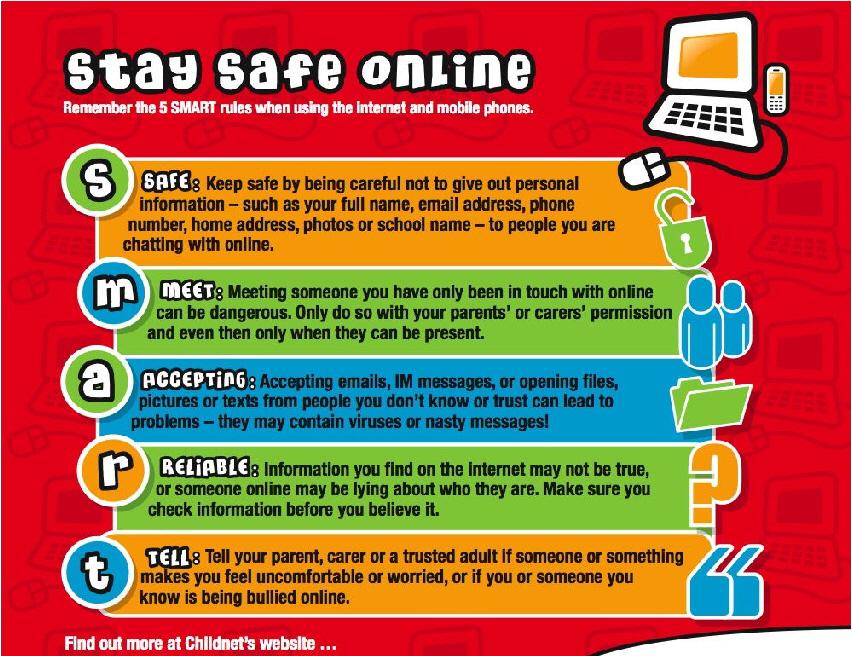
9 KEYS TO KEEPING YOUR CHILDREN SAFE ONLINE

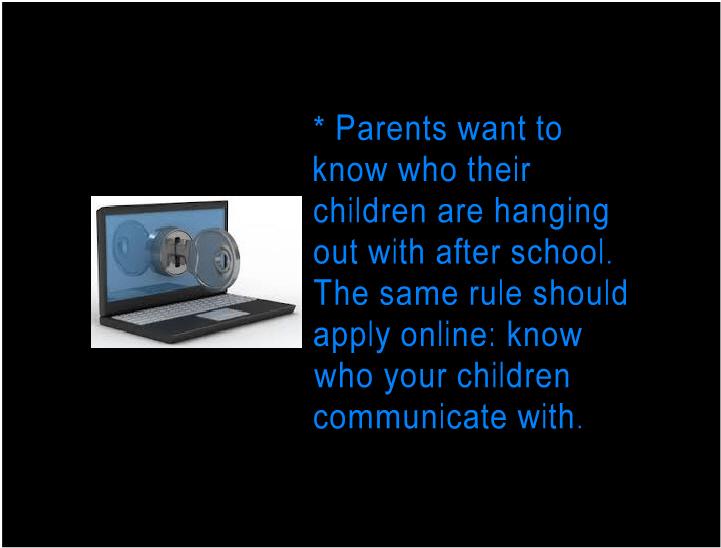
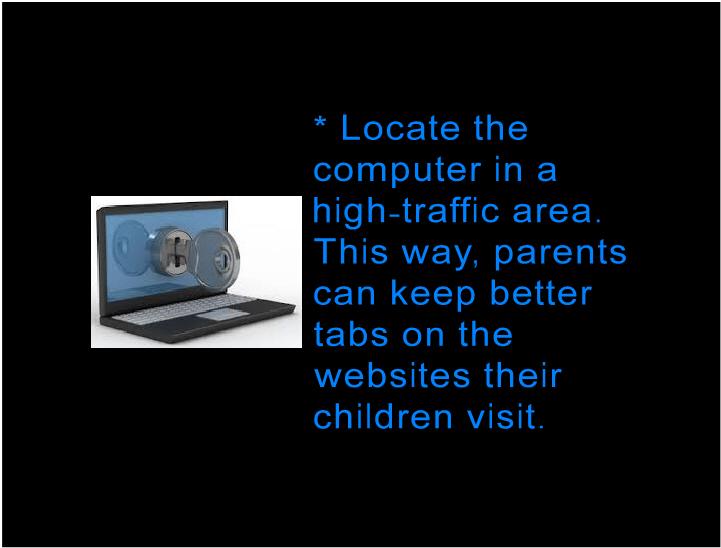

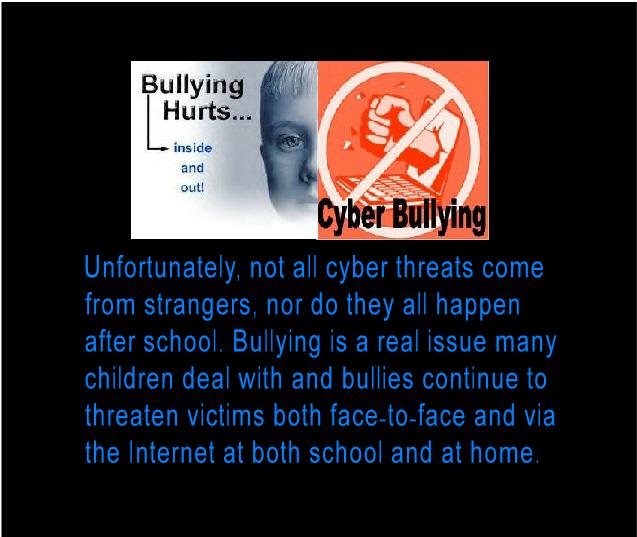
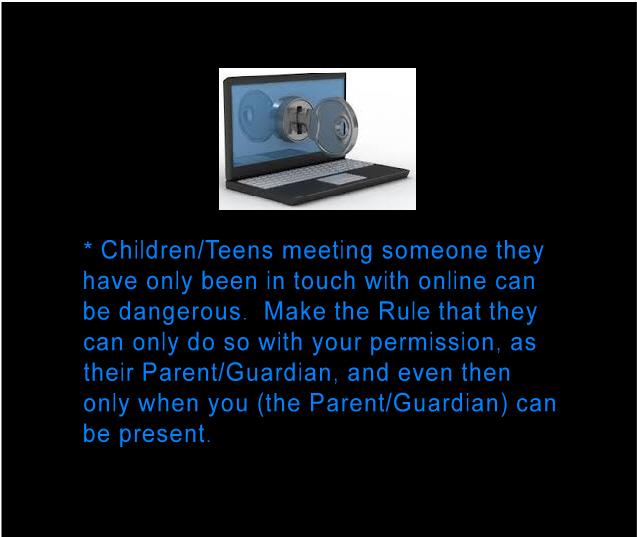
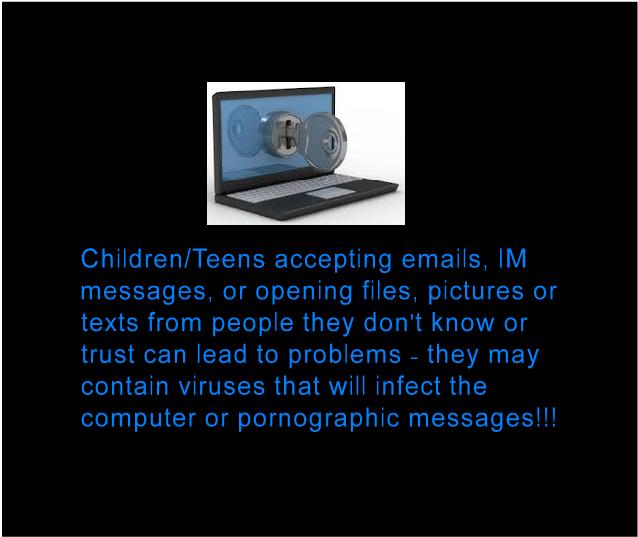

KEY NUMBER 8

KEY NUMBER 9
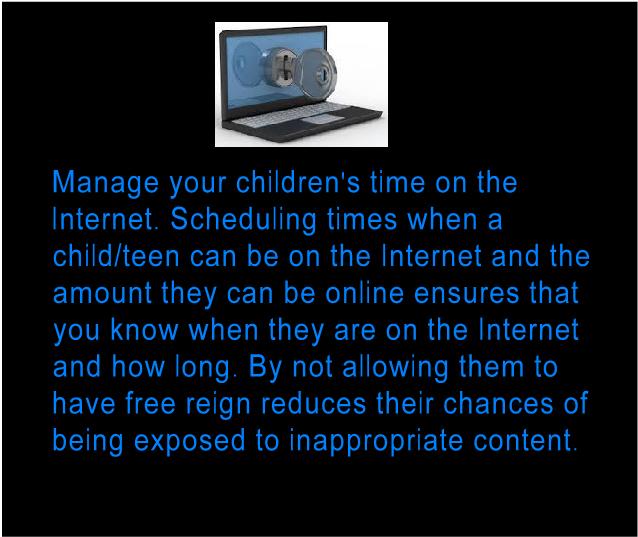
Dangerous Teen Fads Parents Should Know About
From vodka eyeballing to smoking smarties and more, many teens are endangering their lives with risky behaviors. We will be covering these dangerous fads and we encourage parents to talk to their children about these extremely dangerous life threatening teen fads so that they understand the seriousness of participating in these deadly teen fads. This segment is recorded and will be playing here on our Amber Alert 2010 Stickam Account page, will be available for viewing on our Amber Aleret 2010 website at http://amberalert2010.yolasite.com, on our Amber Alert 2010 Missing Teens Facebook Page https://www.facebook.com/pages/Amberalert2010-missing-teens/180034275413699 and we will also be sharing the recording with the public in our individual Facebook streams often. Parents need to know about this very important topic.

When we think about teen substance abuse, our minds veer to dad's liquor cabinet or illegal drugs. But reports show that teens are increasingly turning to their home kitchen pantries to chase a high.
YouTube videos and Internet blogs are spreading the use of some everyday items you might use to make dessert, including nutmeg and vanilla extract, for mind-altering purposes. Read on to learn about some of the items being abused.
Drinking Cough Syrup

These cheap, accessible over-the-counter meds have become go-to recreational drugs for teenagers, who refer to the high they induce as "robotripping." Cough syrup contains dextromethorphan, or DXM, which can make users euphoric and induce hallucinations. In high enough doses, it can also cause death. Because of its widespread abuse by teenagers, the FDA considered requiring products like Robitussin and Nyquil to be sold by prescription, but ultimately decided against the proposal in 2010.
Playing the Choking Game
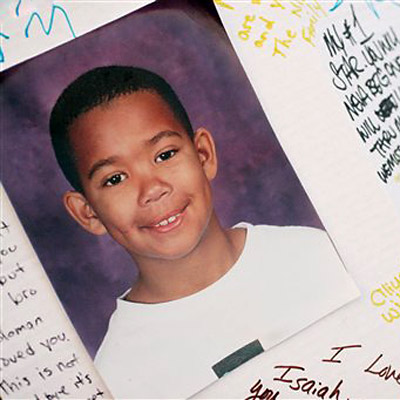
Playing the Choking Game
In search of a few seconds of euphoria, many kids play the choking game, which involves choking or strangling, manually or with a rope or belt or string, to the point of almost passing out. Some kids choke their friends or hold plastic bags over a friend's or their own heads, in an effort to achieve a "rush" or feel high.
A January survey of 837 Texas university students by the Crime Victims' Institute at Sam Houston State University found that 16 percent of them had played the game. On average, most of them had played the first time when they were 14, and many had played it more than once. The risks of oxygen deprivation from choking include brain damage and death.
A new study conducted by the Oregon Public Health Division reports that middle school kids who play the "Choking Game" (also known as Knock Out, Space Monkey, Flatlining, or the Fainting Game) are more likely to try other worrisome activities. The study showed that 6% of the state's teens admitted to playing this so-called game, boys and girls seemed to participate more or less equally, and participants were more likely to be sexually active and drug abusers. What's more, girls who copped to playing were more apt to gamble and eat poorly, while boys were more likely to be exposed to violence. The study's lead researcher, Robert Nystrom, recommends parents be on alert for warning signs of the game, including unusual marks on the neck, red dots around the eyelids (a sign of hemorrhaging) and unexplained headaches.
Teen's death blamed on 'choking game'Friday, December 09, 2011

"That a lot of children played the choking game and that's what it looked like it was," said Elisabeth Piefer.
The choking game has been around for years, but it's spreading because of online videos.
"This is like a hMILLBRAE, Calif. (KGO) -- It goes by many names -- space monkey, Cali high, the choking game -- and it's a risky fad that appears to have claimed another young victim, a freshman from Mills High School in Millbrae.
Child advocates say we're not putting any ideas into kids' heads by doing this story -- most already know about the choking game and it's important for parents to be warned. The parents of the boy who died this past Saturday asked the I-Team to tell this story.
Phil and Elisabeth Piefer from Millbrae buried their son Friday. Dylan was just 14 years old.
"Very happy, full of life the day he died," said Dylan's mother, Elisabeth Piefer. "He was so happy that day, he cleaned his room up, I gave him $10 and he said, 'Thanks mom, I love you,' and that was the last I saw of him."
This past Saturday, Dylan told his parents he was heading to the park to meet friends. He climbed through a hole in the fence, walked the long path to the airport property that lines Highway 101 across from SFO. Just across the water is a popular meeting place; they call it "the fort."
Dylan was the first one there. His friends arrived to find him with a rope around his neck, attached to a tree about four feet from the ground.
"He was on his knees when they found him. There was no way that he was, you know, he could have got up," said Dylan's uncle, Kenny Piefer. "If his friends were there, they could have took the rope off him at least, if there was other people there with him."
"My friend Elisabeth came flying to my house screaming that her son was found dead over here," said family friend Christina Baugh.
San Mateo County sheriff's investigators are working the case as a suicide, but the coroner told the family it appeared to be something else.
"It's maybe considered a safe way to experiment with a different state of mind because drugs aren't used," she said.
It's difficult to track just how many kids die from the choking game; they're often simply ruled a suicide.
While Dylan's investigation moves forward, his classmates and teachers at Mills High are being offered grief counseling. They've been writing their thoughts on a banner for him.
How-to instructional video, how to do it, but be careful, don't kill yourself 'cause then it would suck if it's my fault," said the narrator in of these online videos.
There are many variations -- deep breaths and pressing on the chest, a headlock, using a rope, belt, bed sheet or curtain. The point is all the same -- cutting oxygen to the brain.
"I want to warn you, I think you lose like several billion brain cells each time you do it," said the video's narrator.
The rush comes as brain cells die. The twitching that's so common with someone who's passed out is actually a seizure. There's also the danger of broken bones, if no one is there to catch and a kid lands hard.
The danger of death grows exponentially when someone does this when they're alone.
"It's definitely not safe because you don't have a lot of control over what you're doing," says adolescent therapist Jennifer Tan.
Tan works with the Bay Area Center for Adolescents, and she has treated kids who've experimented with the choking game.
Even on this, the most painful of days, Dylan's parents want you to hear their story, hoping something good can come from such tragedy.
"And I have the biggest hole in my heart and I hope no other parent ever, ever has to go through this," said Dylan's mother. "It's heartbreaking over something just so silly."
Investigators are checking reports of an adult male seen heading into the trees with Dylan just before he died.
Those instructional videos are all over the Internet, in fact, parents' groups use them to explain the warning signs, such as marks on the neck, bloodshot eyes, or persistent headaches.
Imbibing Hand Sanitizer for Alcohol
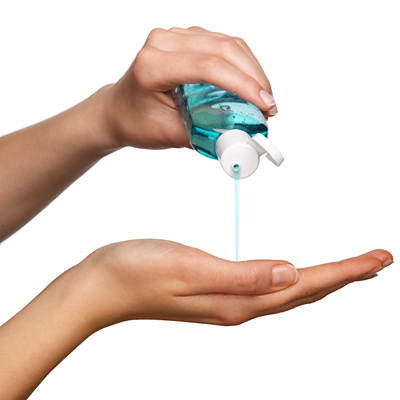
Imbibing Hand Sanitizer for Alcohol
Locking up the liquor cabinet used to be enough to keep kids sober, but Helen Arbogast, injury prevention coordinator in the trauma program at Children's Hospital Los Angeles, told Los Angeles Times readers to watch their kids' use of hand sanitizer. It's just the latest of a list of items, like mouthwash and vanilla extract, that teenagers have imbibed for a buzz. Teens have shown up in hospital rooms across the country after ingesting hand sanitizer, either straight out of the squeeze bottle or after using salt to separate the alcohol from the sanitizing agent. Arbogast suggested parents buy foam hand sanitizers, which are harder to extract alcohol form.
Many germaphobes are addicted to hand sanitizer every time they shake hands, sneeze, or touch a subway pole, but some teens looking for a cheap high are using it in a highly disturbing new way. Kids are actually getting drunk off the over-the-counter cleanser. Most formulas contain 62% ethyl alcohol and using salt to separate the alcohol from the sanitizer yields a potent 120-proof shot. After a few drinks, a person might be so drunk that medical intervention is necessary as was the case with six teenagers with alcohol poisoning who checked into the emergency room at two hospitals in San Fernando Valley, California. If parents buy hand sanitizer, experts advise using the foam version (versus the gel type) because it's harder to extract the alcohol.
VODKA EYEBALLING

Parents are usually concerned about their college students doing more shots than studying, but the New York Daily News recently reported on a worrisome new drinking trend of "vodka eyeballing." Partying co-eds tilt back their heads and have a vodka shot poured onto their eye, which gives a quick buzz when the alcohol enters the bloodstream through the veins in the back of the eye. This stunt seems to have come from outlandish Las Vegas nightclubs, but has made its way onto university campuses and the trend has started among high school teens. Not only does the idea sound not-so-smart, but doctors are concerned about possible long-term damage to the sensitive eye area, like scarring and impaired vision for life.
Teens soaking Gummi bears with vodka

While teen drinking isn't new, there are new ways teens sneak booze into school. According to news reports, one of these is vodka-soaked gummy bears. The benign-looking candy that kids pass around during lunchtime could be hiding the taste of strong liquor. The risk is that teens have no clue how much alcohol they're consuming.
Teens soaking Gummi bears with vodka
Published: Nov. 20, 2011 at 11:28 PM
MINNEAPOLIS, Nov. 20 (UPI) -- Teens soaking Gummi bears with vodka can be added to other creative ways of getting drunk such as vodka-soaked tampon, Minnesota health officials say.
The Minnesota Health Department, the Hennepin County Regional Poison Center and the Dakota County attorney's office sent warnings to schools about the booze-soaked Gummi bears in mid-October, the Minneapolis Star Tribune reported.
James Backstrom, Dakota County attorney, said the spiked Gummi bears are gaining traction via the Internet, with instructions and YouTube clips readily available.
"The Internet gives things life," Backstrom told the Star Tribune. "Kids are drinking way more than their parents. It's the difference between having dialup and broadband."
Minnesota is among the Top 5 states for binge drinking, along with Wisconsin, Iowa and North and South Dakota.
******************************
Did you know that Gummi bears are part of a dangerous trend that has some saying: Beware of the Bear?
Health departments across the country are warning teens that vodka-soaked Gummi bears are dangerous.
Several states are now sending out information to parents, schools, and police to keep an eye out for the booze-soaked bears.
It is the latest method teens are using to get drunk.
Health advisors say vodka is odorless, and in most cases, allows the bears to keep their shape.
The enhanced bears have been spotted at sports games, dances, even in classrooms.
Vodka Tampons? Reported Alcohol Abuse Among Teens Also Includes 'Butt Chugging'
It would appear that nobody wants to use their mouth anymore to get drunk.
Much to their parents' dismay, teens have long been known to secretly consume alcohol, and the latest method reportedly has them doing so with tampons and bongs.
"[It's a] quicker high, they think it's going to last longer, it's more intense," Dr. Dan Quan from Maricopa Medical Center in Phoenix told KPHO News.
Vodka tampons are exactly what they sound like. Teens supposedly soak a tampon in alcohol and consume it by either taking as shots or inserting the tampons in their rectums or vaginas, KPHO reported. This way, alcohol is absorbed directly into the bloodstream through the membrane walls. In fact, Dr. Lisa Masterson, co-host of "The Doctors," says this method will "literally destroy the vagina."

ALCOHOL ENEMAS [ALSO KNOWN AS "BUTT CHUGGING" as referred to in the above report on Vodka Tampons story] ON THE INCREASE
Alcohol enemas are no laughing matter, experts say. One of the Tennessee students was taken to the hospital with a blood alcohol level of 0.40, officials said. That's five times the legal limit and in what doctors call the "death zone" for alcohol poisoning.
Using an alcohol enema involves placing a small tube into someone's rectum and pouring alcohol into the colon. Because the alcohol is absorbed directly into the bloodstream, the recipient gets drunk faster.
Our stomachs and livers have an enzyme known as alcohol dehydrogenase that breaks down ethanol to make it less toxic for our bodies, said Atlanta gastroenterologist Dr. Preston Stewart. The lower gastrointestinal tract doesn't have that enzyme, so alcohol molecules are absorbed into the bloodstream through the lining of the colon.
Eventually the alcohol would still make its way to the liver, Stewart said, but the high alcohol content would overwhelm the organ. "It's extremely dangerous."
Purple Drank

Purple drank is a legal and lethal concoction of Sprite, Jolly Ranchers, and codeine cough syrup. Rappers, hip-hop artists and pro athletes have made this fad cool and brought it into the mainstream among teens and young adults. There is even a style of mulsic for "learners" to listen to -- it's slowed down to mirror the effects of the drink, which are unresponsiveness, lethargy, hallucination and a slow-mo zombie feeling.
Getting High on Nutmeg

A spice we usually associate with holiday parties also causes another kind of buzz. Nutmeg contains a psychoactive chemical called myristicin, which has a chemical structure similar to that of mescaline, amphetamine and Ecstasy. It's known for causing hallucinations, including a floating sensation. YouTube videos capture people in euphoric states after consuming a whole grated nutmeg or more, and poison centers around the country have released warnings to parents about the abuses of the common spice.
The Cinnamon Challenge

The Cinnamon Challenge
You may have seen YouTube clips showing the cinnamon challenge. A person attempts to swallow a tablespoon of cinnamon without water, and spitting, gagging and coughing ensue. While not a drug, the American Association of Poison Control Center’s National Poison Data System has told parents to discuss the risks of the so-called challenge with children, after receiving an increased number of calls about kids needing medical evaluations because of the challenge. Dr. Russell Migita, clinical director of Emergency Services at Seattle Children’s Hospital, told "Today" that the cinnamon could cause inflammation in the lungs, or in extreme cases, a collapsed lung from an extreme coughing fit.
Smoking Smarties

YouTube videos feature tutorials of kids "smoking" Smarties candy -- or crushing them up and inhaling (and exhaling) the dust, anyway. The practice itself is not dangerous (except in rare cases when the dust can clog nasal passages) but mimicking the gestures of smoking cigarettes or illegal drugs should be enough to make parents pay attention.
Datura Flower Abuse

This common plant, also known as Angel's Trumpet or Jimson Weed, can get kids high when ingested, but it's also incredibly toxic. Even small doses can send kids to the hospital with serious illness and eating too much can cause death. Because the flower grows all across North America, overdose cases are widespread and rising.
WAYS TO PROTECT YOUR CHILDREN
ON THE INTERNET
We Will Be Covering This On Our Amber Alert Show as we have seen an escalation in cases the past month and a half of 12 to 16 year old teens going missing and a couple of cases where they were sexually assaulted and murdered meeting someone they met online, which turned out in all the cases to be a sexual predator posing as a teen their age. One of the cases was a Level 3 Sexual Predator that had just been released from prison.
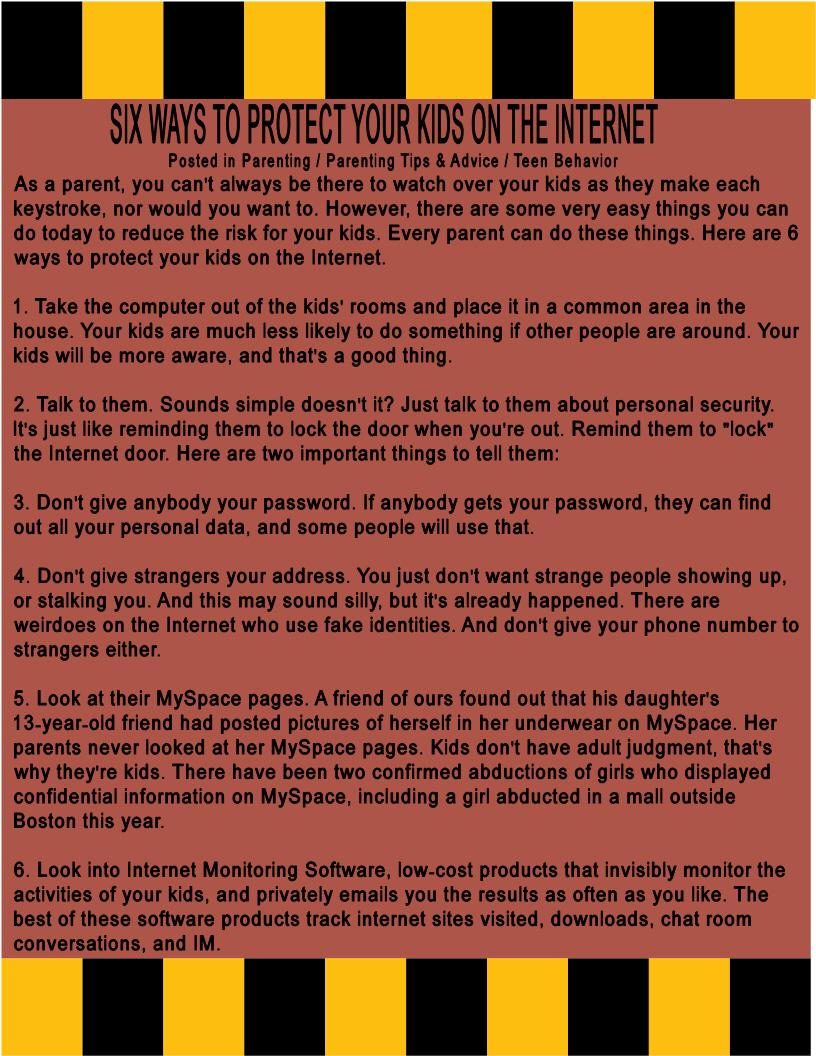

Christina Almanza, California Teen Who Faked Own Abduction, Could Be Fined $30,000
A teenage girl in California who admitted to faking her own abduction in an effort “to get sympathy from her family” could soon be facing fines of more than $30,000 from law enforcement for wasting police resources.
An Amber Alert was issued for 17-year-old Christina Almanza on Dec. 8 when her family reported her missing after receiving a voicemail and “disturbing” text messages from Almanza.
“The voicemail and text messages stated that she, and possibly other females, were being held against their will in a basement and that one female had possibly been killed,” according to a police report from the Suisun City Police Department in California.
The teen was found the next day when officials went to a home to seek information from one of Almanza’s contacts. When they arrived, they found the blue 1999 Oldsmobile minivan that she was last seen driving parked in the driveway.
Almanza confessed that the text messages had been fake.
“She actually admitted that all those were false. She made all those up,” Suison Police Cmdr. Tim Mattos told ABCNews.com. “She did it to get attention from her family.”
Almanza told authorities that she did not expect law enforcement to get involved.
Reports said that Almanza faked the abduction because she was afraid of telling her family she was pregnant. While police did not medically confirm whether or not she was pregnant, they said the following:
“During the investigation, we were receiving information from different sources believing that she may be pregnant and that may be what caused her to disappear,” Mattos told ABCNews.com.
Mattos added that Almanza already has a 2-year-old child.
GPS Shoes for Alzheimer’s PatientsABC News’ Alicia Tarancon reports:
Imagine the terrifying feeling of trying to find your lost mother or father. They wandered off again because they have Alzheimer’s, a disease that affects 5.4 million people in the United States.
Now one accessory has been developed to prevent that. The first shoes with a built-in GPS system are scheduled to hit store shelves later this month, giving families and caregivers an easy way to track lost loved ones, Agence France-Presse reports.
The company behind the shoe, GTX, has already shipped the first 3,000 pairs to be sold through Aertex World Wide. The Los Angeles company patented a miniature GPS device small enough to fit in the heel. They will sell for around $300.
Consultant and assistant professor Andrew Carle at George Mason University’s Program in Senior Housing Administration said the shoes could save lives.
“Sixty percent [of people with Alzheimer's] will wander off and get lost,” said Carle, a scare that prompts panicked family members to call the police.
Carle said the shoes could be synched with Google Maps to pinpoint exactly where the person wearing them goes. The devices could even be programmed to send an alert if the wearer wanders out of a specified area, or ”geofence.”
Carle said people with Alzheimer’s or dementia don’t always realize they’re lost and, if frightened, might even decide to hide.
There are “very high rates of death within 24 hours – half of Alzheimer’s patients die from injuries and dehydration,” he said. “It’s not good.”
There are other tracking options available, such as tracking bracelets and small assist buttons that can be stored in a pocket, clipped onto clothes or worn around the neck. Wander Guard is another alert system that triggers an alarm when someone opens a door to leave.
But Carle said GPS shoes prevent patients from easily removing the tracking the device.
“If they never wore a wristwatch, they will look at it and say whose is that and take it off or that’s not my bracelet, that’s not my pendent,” he said.
The shoes don’t replace the need to pay close attention to people with Alzheimer’s but offer caregivers another tool to help take care of them.
“Every day people with Alzheimer’s are getting lost, but it doesn’t have to be” that way, said Carle.
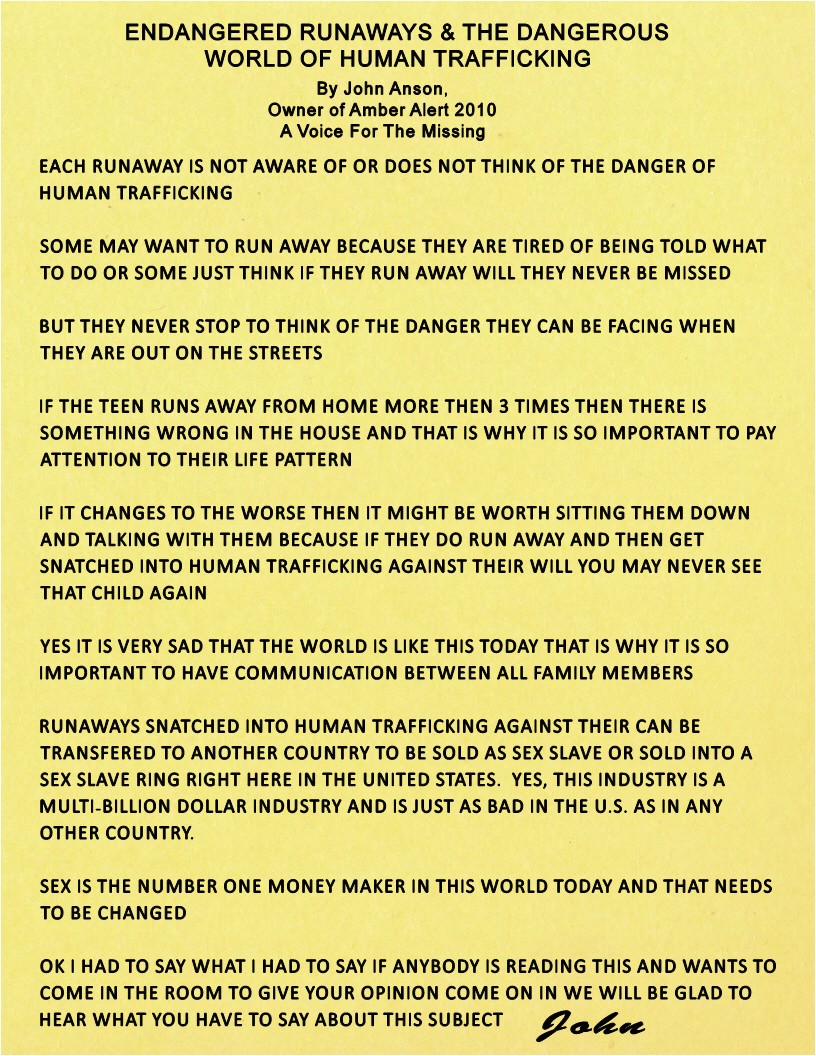
CYBER BULLYING

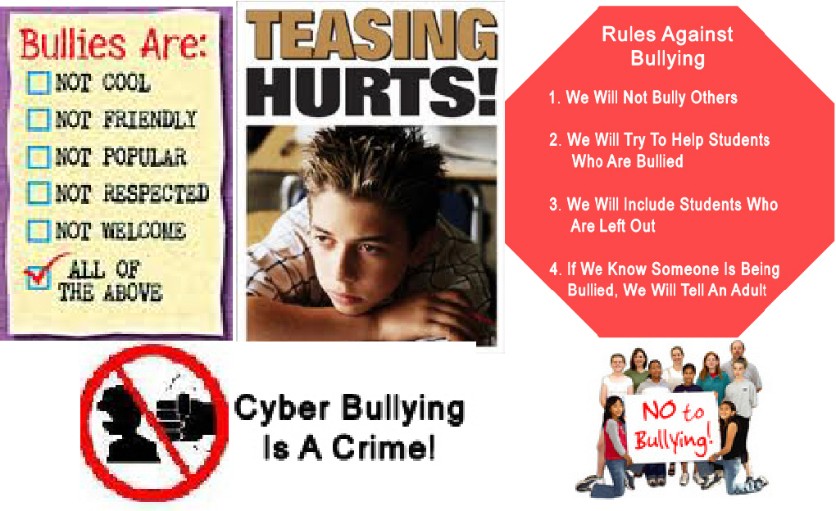
FOLLOWING INFORMATION IS FROM BULLYINGSTATISTICS.ORG
Cyber Bullying Statistics
Cyber bullying statistics refers to Internet bullying. Cyber bullying is a form of teen violence that can do lasting harm to young people. Bullying statistics show that cyber bullying is a serious problem among teens. By being more aware of cyber bullying, teens and adults can help to fight it.
Cyber bullying affects many adolescents and teens on a daily basis. Cyber bullying involves using technology, like cell phones and the Internet, to bully or harass another person. Cyber bullying can take many forms:
> Sending mean messages or threats to a person's email account or cell phone
> Spreading rumors online or through texts
> Posting hurtful or threatening messages on social networking sites or web pages
> Stealing a person's account information to break into their account and send damaging messages
> Pretending to be someone else online to hurt another person
> Taking unflattering pictures of a person and spreading them through cell phones or the Internet
> Sexting, or circulating sexually suggestive pictures or messages about a person
Cyber bullying can be very damaging to adolescents and teens. It can lead to anxiety, depression, and even suicide. Also, once things are circulated on the Internet, they may never disappear, resurfacing at later times to renew the pain of cyber bullying.
Many cyber bullies think that bullying others online is funny. Cyber bullies may not realize the consequences for themselves of cyberbullying. The things teens post online now may reflect badly on them later when they apply for college or a job. Cyber bullies can lose their cell phone or online accounts for cyber bullying. Also, cyber bullies and their parents may face legal charges for cyber bullying, and if the cyber bullying was sexual in nature or involved sexting, the results can include being registered as a sex offender. Teens may think that if they use a fake name they won't get caught, but there are many ways to track some one who is cyber bullying.
Despite the potential damage of cyber bullying, it is alarmingly common among adolescents and teens. According to Cyber bullying statistics from the i-SAFE foundation:
* Over half of adolescents and teens have been bullied online, and about the same number have engaged in cyber bullying.
* More than 1 in 3 young people have experienced cyberthreats online.
* Over 25 percent of adolescents and teens have been bullied repeatedly through their cell phones or the Internet.
* Well over half of young people do not tell their parents when cyber bullying occurs.
The Harford County Examiner reported similarly concerning cyber bullying statistics:
* Around half of teens have been the victims of cyber bullying
* Only 1 in 10 teens tells a parent if they have been a cyber bully victim
* Fewer than 1 in 5 cyber bullying incidents are reported to law enforcement
* 1 in 10 adolescents or teens have had embarrassing or damaging pictures taken of themselves without their permission, often using cell phone cameras
* About 1 in 5 teens have posted or sent sexually suggestive or nude pictures of themselves to others
* Girls are somewhat more likely than boys to be involved in cyber bullying
The Cyberbullying Research Center also did a series of surveys that found these cyber bullying statistics:
* Over 80 percent of teens use a cell phone regularly, making it the most popular form of technology and a common medium for cyber bullying
* About half of young people have experienced some form of cyber bullying, and 10 to 20 percent experience it regularly
* Mean, hurtful comments and spreading rumors are the most common type of cyber bullying
* Girls are at least as likely as boys to be cyber bullies or their victims
* Boys are more likely to be threatened by cyber bullies than girls
* Cyber bullying affects all races
* Cyber bullying victims are more likely to have low self esteem and to consider suicide
*********************************************************************************
Preventing/Reducing Cyberbullying
Parents and teens can do some things that help reduce the cyber bullying statistics:
1.) Talks to teens about cyber bullying, explaining that it is wrong and can have serious consequences. Make a rule that teens may not send mean or damaging messages, even if someone else started it, or suggestive pictures or messages or they will lose their cell phone and computer privileges for a time.
2.) Encourage teens to tell an adult if cyber bullying is occurring. Tell them if they are the victims they will not be punished, and reassure them that being bullied is not their fault.
3.) Teens should keep cyber bullying messages as proof that the cyber bullying is occurring. The teens' parents may want to talk to the parents of the cyber bully, to the bully's Internet or cell phone provider, and/or to the police about the messages, especially if they are threatening or sexual in nature.
4.) Try blocking the person sending the messages. It may be necessary to get a new phone number or email address and to be more cautious about giving out the new number or address.
5.) Teens should never tell their password to anyone except a parent, and should not write it down in a place where it could be found by others.
6.) Teens should not share anything through text or instant messaging on their cell phone or the Internet that they would not want to be made public - remind teens that the person they are talking to in messages or online may not be who they think they are, and that things posted electronically may not be secure.
7.) Encourage teens never to share personal information online or to meet someone they only know online.
8.) Keep the computer in a shared space like the family room, and do not allow teens to have Internet access in their own rooms.
9.) Encourage teens to have times when they turn off the technology, such as at family meals or after a certain time at night.
10.) Parents may want to wait until high school to allow their teens to have their own email and cell phone accounts, and even then parents should still have access to the accounts.
11.) If teens have been the victims or perpetuators of cyber bullying they may need to talk to a counselor or therapist to overcome depression or other harmful effects of cyber bullying.
*********************************************************************************
Sources:
Richard Webster, Harford County Examiner, "From cyber bullying to sexting: What on your kids' cell?" [online]
i-SAFE Inc., "Cyber Bullying: Statistics and Tips" [online]
Cyberbullying Research Center, "Summary of our cyberbullying research from 2004-2010" [online]
National Crime Prevention Council, "Cyberbullying" [online]
ONCE IT'S CRUMPLED, IT CAN'T BE PERFECT!

"Paula - A teacher in New York was teaching her class about bullying and
gave them the following exercise to perform. She had the children take a
piece of paper and told them to crumple it up, stamp on it and really
mess it up but do not rip it. Then she had them unfold the paper, smooth
it out and look at how scarred and dirty is was. She then told them to
tell it they’re sorry. Now even though they said they were sorry and
tried to fix the paper, she pointed out all the scars they left behind.
And that those scars will never go away no matter how hard they tried to
fix it. That is what happens when a child bullies another child, they
may say they’re sorry but the scars are there forever. The looks on the
faces of the children in the classroom told her the message hit home."
OPEN LETTER TO PARENTS, FAMILY MEMBERS, & SOCIETY FROM INNOCENT BABIES & CHILDREN MISTREATED, ABUSED & MURDERED BY THEIR OWN PARENTS & THE JUSTICE SYSTEM LETTING THEM DOWN!

